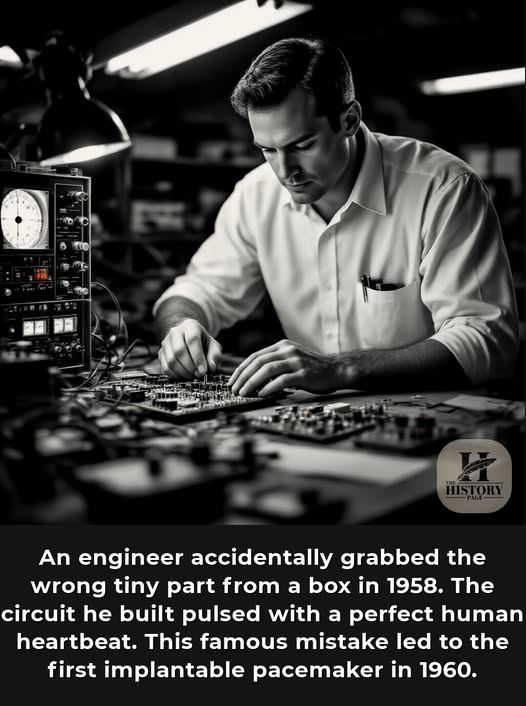
Engineer Wilson Greatbatch accidentally grabbed the wrong part in 1958, leading to one of the most important medical inventions of the 20th century.
He was building a device to record heart rhythms at the University of Buffalo. He reached into his component box for a 10,000-ohm resistor, but pulled out a 1-megaohm one instead.
When he plugged it into the circuit, it didn’t work as intended. Instead of simply oscillating, the device began to emit a steady, rhythmic electrical pulse.
It pulsed for 1.8 milliseconds, then stopped for a second, then pulsed again. Greatbatch immediately recognized the rhythm. It was a perfect imitation of a healthy human heartbeat.
He realized this wasn’t a failure, but a breakthrough. He saw the potential for a device that could be implanted inside the body to regulate a faulty heart.
Greatbatch refined his design over the next two years, working with surgeon Dr. William Chardack to make it small and safe enough for a human.
In 1958, they successfully tested their device by implanting it into a dog, proving it could take over the function of the heart.
Two years later, in 1960, the first implantable pacemaker was successfully placed in a human patient, extending his life by 18 months.
This single mistake, grabbing the wrong tiny part from a box, gave rise to a technology that has saved and improved millions of lives worldwide.
